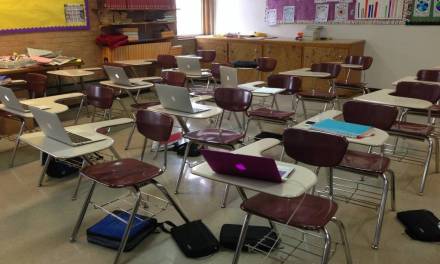For pupils with emotional and behavioural issues who find they are at threat of exclusion from their school, there are now a number of in-house alternative provisions which have been set up. These look to work with pupils and parents as a support mechanism without the need to move the pupil off-site.
The initial goal is to pinpoint the central problems if not already known and to then work over a period of time with the end target being the move back into their previous ‘mainstream’ year group.
Learning Support Units
Learning Support Units (LSU) can offer the opportunity for those pupils who are at risk of exclusion to remain on-site but with the extra help of the LSU. An important component in the success of an in-house LSU is that the greater the integration between the two styles of educational provision, the more inclusion is enjoyed by the pupils.
The most successful LSUs have active inclusion where the gap between the pupil’s experience in the LSU and their link to the mainstream part of the school is minimal. This is achieved through:
- ‘Mainstream’ teachers visiting the LSU
- ‘Mainstream’ teachers contributing to the programme of the LSU
- Consistency of curriculum and that it runs parallel to the rest of the school
- Maximum placement times in the unit
- Support being in place for times when pupils are part of ‘mainstream’ classes
LSU work should revolve around the need for provision which is individual to each pupil. This will address many issues where pupils feel they can’t recognise or explore their individuality within the ‘mainstream’ sector.
Inclusion Coordinators
An Inclusion Coordinator employed as an in-house member of staff will usually take the responsibility to oversee and co-ordinate those in an LSU or similar facility. Many schools now employ someone in this role; often though whilst they will have experience at a senior level within a school, there is no SENCO background. With the SEN element of an LSU being an important strand to investigate as part of pupil support, schools should always look to find a candidate with senior SENCO experience when employing a coordinator.
Use of the RIGAAR Model within an LSU
Teachers engaging with those pupils who are placed in an LSU often benefit from a different thinking perspective. The Ivan & Tyrrell RIGAAR model looks to enhance engagement and to build bridges towards a new future in education.
RIGAAR stands for:
Rapport building: empathetic listening to engage in conversation and start to build bridges
Information gathering: pulling together of data about who is involved in problems, where and when issues occur and also spotting scenarios where a problem does not take place
Goals: small steps, which can be taken at a pace which is discussed with the pupil and which will help with achievement in more, challenging situations
Accessing a strategy: ways to realistically move forward with thought processes
Accessing resources: exploring the resources the pupil already possesses. Look at life achievements, personal qualities and current strengths. Use these as levers to suggest ideas and solutions
Rehearsal: work around the subject of how life will feel when goals are met, when success is achieved or what behaviour can be used in different situations.
Schools which actively work to spot early signs of issues for pupils and effectively use data to identify patterns of behaviour are able to put in-house provisions in sooner rather than later. This mechanism means that advice and support can then be offered to pupils and parents and engagement with disaffected children can begin to be addressed along with emotional and behavioural problems.
In-house alternative provision means that once the issues are addressed, the transition back to a ‘mainstream’ classroom is easier to actively manage, as the pupil has not – in effect, left school.









